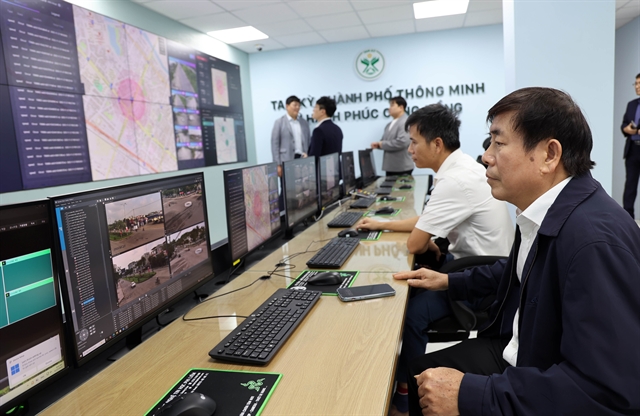 Economy
Economy

The integrated circuit market in Việt Nam has huge potential, but no significant action for its development has been taken recently, is experts’ scathing verdict.

|
| Government and private firms should pay more attention to the long-term development of the semiconductor industry. VNA/VNS Photo |
HCM CITY — That the integrated circuit market in Việt Nam has huge potential, but no significant action for its development has been taken recently, is experts’ scathing verdict.
In 2013 HCM City became the first locality to launch an IC development programme at a cost of VNĐ7.5 trillion.
It was expected that by 2017 its IC industry would have revenues of US$100-150 million and at least five electronics multinationals investing in Việt Nam, trained 2,000 engineers and technicians and incubated over 30 domestic technology firms.
After the establishment of the HCM City Semiconductor Industry Association, many activities related to the 2013-2020 HCM City IC Industry Development Programme were carried out, raising high hopes in the industry.
Agreements were signed between key agencies and the Ministry of National Defence, the HCM City Information and Communication Department and ICDREC (Integrated Circuit Design Research & Education Center) for human resource training and research and development of IC products.
In 2013-17 city authorities allocated VNĐ68 billion (nearly US$3 million) to fund 18 research and trial production projects.
Soon afterwards many products were launched with the SG-8V microchip, including single-phase electronic meter SEM1-MD, DCM data collection modem and three-phase electronic meter SEM3-MC.
Following SG-8V1, other chips such as Sigma K3, VN 16-32 and HF-RFID were tried in many smart products, including watches, container locks, car black boxes, and motorcycles.
However, there has been not much activity in the last three years, raising concerns that the IC industry may fall into oblivion.
Nguyễn Anh Tuấn, chairman of the and HCM City Semiconductor Industry Association (HSIA), admitted that implementation of the programme has faced difficulties due to a number of reasons, including change of senior personnel.
According to a report by global technology research and advisory company Technavio, the Vietnamese semi-conductor market is poised to grow by almost 19 per cent in 2020-24 to $6.16 billion.
Việt Nam has a lot of potential with its population of 90 million and a very young demography, a factor that is important for every industry.
To ensure sustainable development and avoid direct competition with global corporations, Vietnamese microchip should develop into its specific that the country need and need to link Government and businesses to promote development program, Nguyễn Anh Thi, director of VNUHCM's Information Technology Park, said. – VNS




